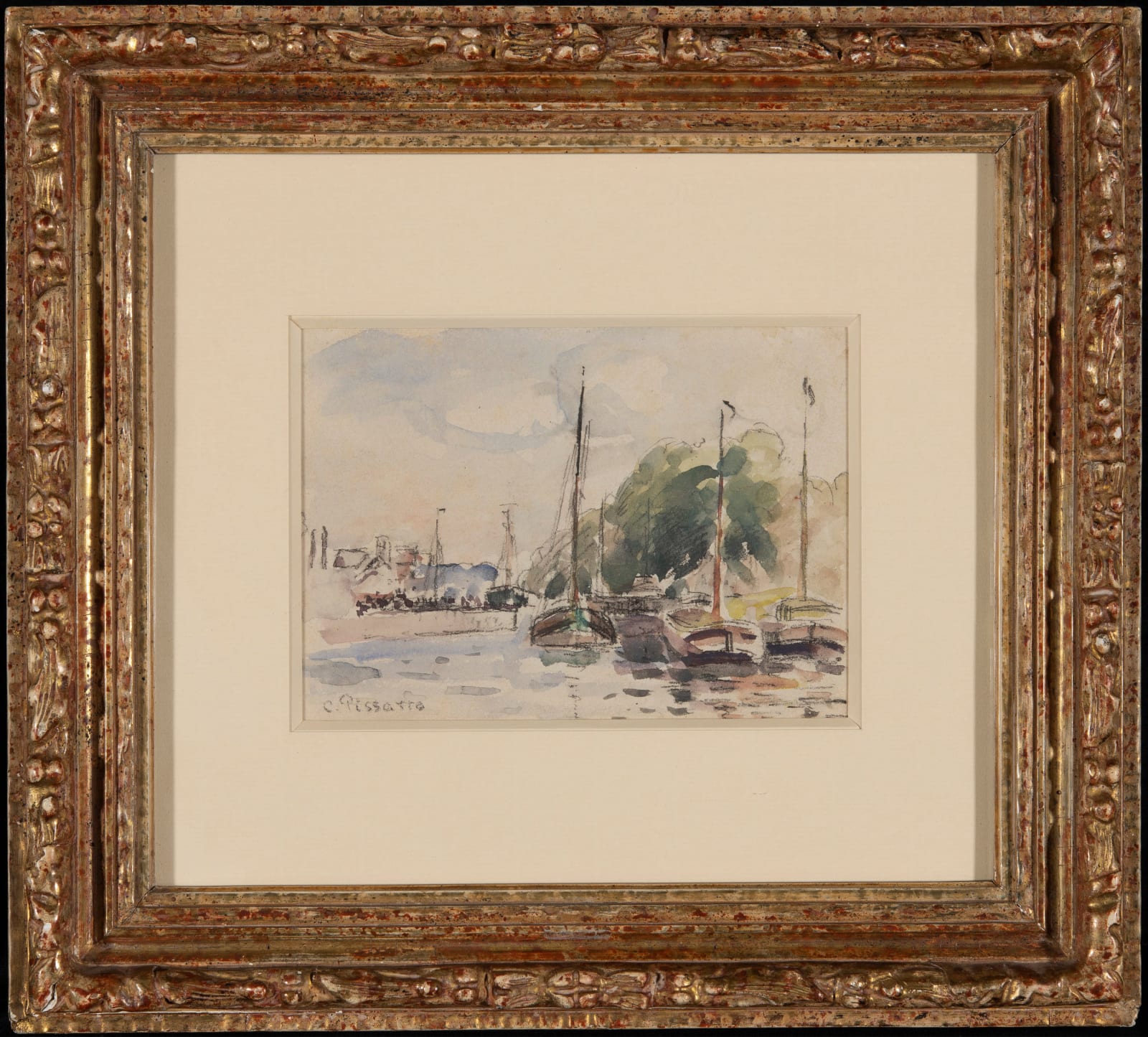-
Artworks
Camille Pissarro
Bateaux à quai, 1894Watercolour over pencil on paper laid down on board5 1/4 x 7 1/8 in, 13.2 x 18.1 cmSigned 'C. Pissarro' lower leftDepicting water had always been a fascination of the Impressionists. Encompassing much of what they sought to express through their art, water was a means for the artists to experiment...Depicting water had always been a fascination of the Impressionists. Encompassing much of what they sought to express through their art, water was a means for the artists to experiment with the effects of light and colour, creating an ‘impression’ of what they saw in that very moment. Many artists took to watercolour, for in being semi-translucent, was the perfect medium to portray the effect of shifting light. In ‘Bateaux à quai’, Pissarro uses an array of blue, mauve and orange tones to convey the reflections on the water.
Camille Pissarro arrived in Brussels with his wife Julie and son Félix on 25 June 1894, and did not return to France for over three months. He did not stay long in Brussels, leaving very quickly for first Bruges and then the seaside resort of Knokke where his friend Théo Van Rysselberghe had a villa. 'Bateaux à quai' is a rare depiction of one of Belgium’s harbours. He wrote to his son Lucien of how “All I have done so far is make a few watercolours; the country is remarkably beautiful”.
Unlike in his paintings of the industrial Norman ports, in ‘Bateaux à quai’ the artist celebrates tranquillity and the enjoyment of nature for leisure. The watercolour is imbued with a sense of serenity and warmth through the sail boats gently floating on the river with the town in the distance.Provenance
Sotheby’s, London, Impressionist Part II, 27 June 2001, lot 101
Private Collection (purchased at the above)
Literature
This work is accompanied by a letter of expertise signed by Dr Joachim Pissarro and dated 25 July 2023 confirming it will be included in the forthcoming Camille Pissarro catalogue raisonné of drawings currently being compiled by Dr Pissarro
1of 10



